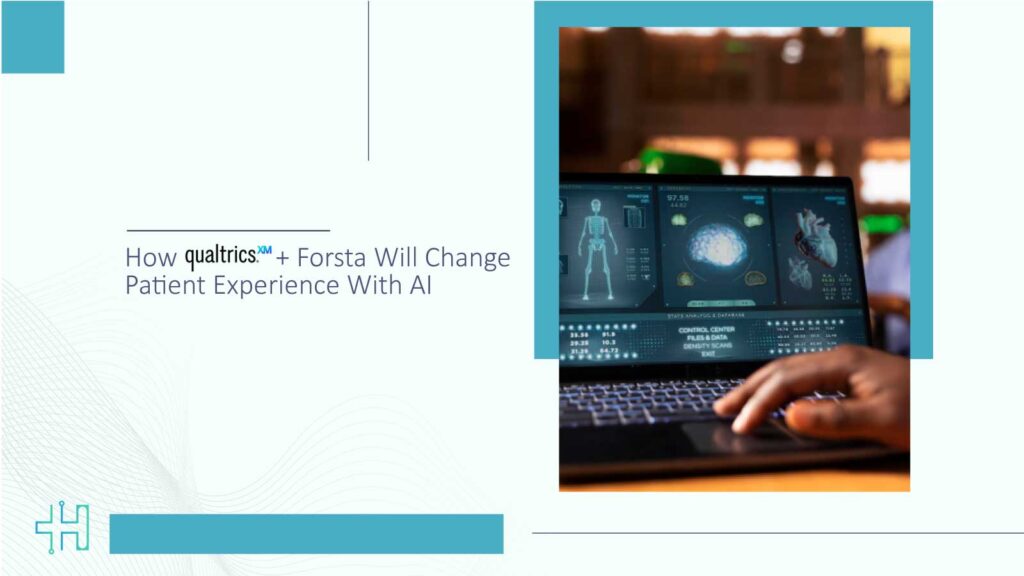Artificial Intelligence (AI) is revolutionizing healthcare at a speed that most of us could not have imagined just ten years ago. From the ability to forecast patient outcomes to supporting diagnosis and tailoring treatment regimens, AI has established its value across numerous clinical applications. Yet with all of its boundless potential, widespread adoption of AI in medicine is thwarted by a single deterrent: trust.
Physicians instinctively resist relying on AI systems whose inner mechanisms are obscure and incomprehensible. This reluctance is not unfounded; medical decisions impact human lives, and a faulty decision can do irreversible damage.
This is where Explainable AI, or XAI, comes into the picture. XAI stands for AI systems that not only forecast but also transparently explain behind such forecasts. In medicine, explainability is not a nicety but a necessity.
Physicians, nurses, and other clinical staff must know why an AI system suggests a specific treatment, indicates a diagnostic issue, or ranks patient cases. Only when AI systems are interpretable can healthcare professionals have faith in integrating them into patient treatment, assured that results are not only efficient but ethical and legally valid.
Understanding Explainable AI (XAI)
Explainable AI, or XAI, is a subfield of artificial intelligence that prioritizes transparency and interpretability. While the more conventional AI models, particularly deep learning models, will be even more akin to “black boxes,” XAI is meant to explain how a system comes to its conclusions. In medicine, this translates to a system that not only forecasts a patient’s risk for an illness but also indicates the contributing factors to that risk – age, medical history, lab work, or lifestyle, for example – so clinicians can understand why AI is making a particular suggestion.
The Explainable AI Market size was valued at USD 9167.2 million in 2024 and is anticipated to reach USD 34458.2 million by 2032, at a CAGR of 18% during the forecast period
XAI extends beyond output explanations; it is the activity of designing AI systems whose workings, internal reasoning, and decision paths are comprehensible to humans. For instance, rather than simply classifying an image as “malignant” or “benign,” an explainable AI system suggests the features of the medical image that prompted it to make the determination. In predictive analytics, likewise, XAI would tell us what factors had the most impact on a patient’s predicted reaction to treatment, so doctors can do something about it.
The Need for Explainability in Healthcare
Explainability is essential in healthcare because AI system decisions directly result in patient outcomes. In most instances, the decisions are subtle diagnoses, treatment suggestions, and risk calculations. Without explainability, doctors will hesitate to depend on AI systems, and patients will question the genuineness of the treatment provided. Explainable AI solves these problems by giving a transparent explanation for every one of the suggestions, in order that physicians can better notice and assist the outcomes.
The second major reason why explainability is important is compliance with regulations and ethics. Healthcare is among the most regulated sectors globally, with stringent regulations aimed at securing patient safety and security. Compliance entities are increasingly demanding AI systems to be transparent and auditable, such that every recommendation will be traceable back to its decision logic and data. Explainable AI provides the documentation required to fulfill such demands, limiting the liability risk and promoting AI-powered healthcare credibility.
In addition, explainable AI minimizes errors and bias. AI programs are only as good as the information used to train them, and biased medical data can cause uninformed or unjustified recommendations. Clinicians can recognize potential errors, detect the role of biased data, and make appropriate course corrections by seeing how an AI program arrives at its conclusion. This level of surveillance guarantees patient care is evidence-based, ethical, and accurate, even when AI is introduced in decision-making.
Building Trust between AI and Clinicians
Trust underlies the integration of AI in healthcare. Clinicians remain responsible for patient care, and they must be assured that AI systems are precise and trustworthy. Explainable AI instills this assurance by making decision-making transparent. If doctors know why an AI system is suggesting a specific treatment or detecting a high-risk patient, they are more likely to integrate AI insights into practice.
Good explainability also promotes collaboration between human intelligence and machine intelligence. Instead of subverting human judgment, AI is a partner that enhances clinical decision-making. For example, an example prediction model may indicate that a patient is likely to develop sepsis. An explainable AI would determine the contributing factors, like a raised white blood cell level or unusual vital signs, so the clinician may validate the recommendation, alter treatment protocols, and advise the patient of the reason.
Buy-in from the patient is a second essential element. Doctors able to explain AI-driven insights in clear terms not only instill trust in the technology but also maximize patient understanding and compliance with treatment plans. Patients become more likely to approve treatment plans and comply with doctors’ instructions when they realize that AI suggestions are drawn from rational, open-sourced explanations.
Lastly, explainable AI enhances professional responsibility. Clinicians are still answerable for decisions and can intervene when AI suggestions appear to go against clinical judgment. Such a balance would have AI assist but not eliminate the human responsibility that is behind medical practice.
Enabling Patient Understanding and Consent
Explainable AI enables physicians to explain decisions made by AI to patients. If the patient gets the justification of the suggestion, he/she is likely to accept the treatment plan. This transparency aids in obtaining informed consent. Patients can openly ask questions and communicate their treatment because AI decisions are explainable and data-driven.
By explaining AI decision-making in simple terms, healthcare workers establish an atmosphere of cooperation where patient independence is optimally realized. Patients feel at ease when AI suggestions are easy to comprehend. This increases adherence to care plans and patient satisfaction.
Reducing Risks and Mistakes in AI-Driven Care
AI can be wrong or repeat biases present in training data. Explainable AI enables clinicians to detect such errors prior to influencing patient care. By indicating what parameters were used in formulating a suggestion, XAI enables physicians to check for correctness and modify treatment plans accordingly.
This openness limits the possibility of misdiagnosis, promotes ethical care, and ensures professional responsibility for AI-assisted healthcare. Explainable AI is also enabling ongoing model improvement. Clinicians can give feedback to developers in an attempt to improve algorithms and minimize future mistakes.
High-level AI tools such as deep learning are “black boxes.” The sophistication of these systems makes them hard to understand for clinicians and their decisions. Integration of AI tools into existing clinical processes is costly, involving training and infrastructure upgrades.
Healthcare data is personal. XAI will need to meet privacy laws such as HIPAA. There isn’t one measure that fits to explainability. Several models produce different levels of transparency, leading to inconsistency.
The Physicians’ Role in Adopting Explainable AI
Physicians serve as champions of interpretable AI to ensure that systems are clinically meaningful and adhere to rigorous ethics standards. Clinicians are responsible for giving feedback to help improve AI models, making them more practical and reliable for real-world use.
Doctors assist patients in educating them about AI-based recommendations, and this assists in establishing trust and compliance with guidelines. Knowing how AI works enables doctors to maintain control and jump in where AI suggestions are not clinically appropriate. To implement explainable AI in practice, clinicians and hospitals are increasingly using tools like Google Cloud AI Explainability.
Explainable AI is transforming the way decisions are made by healthcare professionals with transparency, accountability, and actionable suggestions. Understanding AI-driven suggestions supports doctors in improving patient care, mitigating risks, and establishing more trust with patients. With ongoing technological advancements, explainability guarantees that technology empowers human expertise instead of replacing it.
Adopting explainable AI is not a choice—it’s the solution to ethical, effective, and patient-centered care. Clinics and hospitals adopting such technologies have better outcomes, adherence, and successful clinician-patient relationships. For healthcare executives, adopting explainable AI means smarter, safer, and more transparent care systems.
FAQs
1. What is Explainable AI in healthcare?
Explainable AI (XAI) are AI systems that can generate transparent, interpretable explanations of their predictions or suggestions so that clinicians can understand and verify decisions.
2. Why should physicians be interested in explainable AI?
Physicians require explainability to be able to trust AI recommendations, maintain patient safety, report to patients, and maintain accountability for clinical decision-making.
3. How does XAI enhance patient care?
By articulating how AI is predicting certain things, XAI enables effective clinical decision-making, identifies mistakes, reduces bias, and tailors treatments too.
4. What are the chief concerns in implementing XAI?
Some of the concerns include complexity of AI models, integration into clinical workflows, concerns regarding data privacy, and absence of standardized evaluation methods.
5. How does the patient benefit with the implementation of XAI?
They become more certain with respect to treatment advice, are more involved in care decisions, and will be more likely to trust AI-augmented care.








